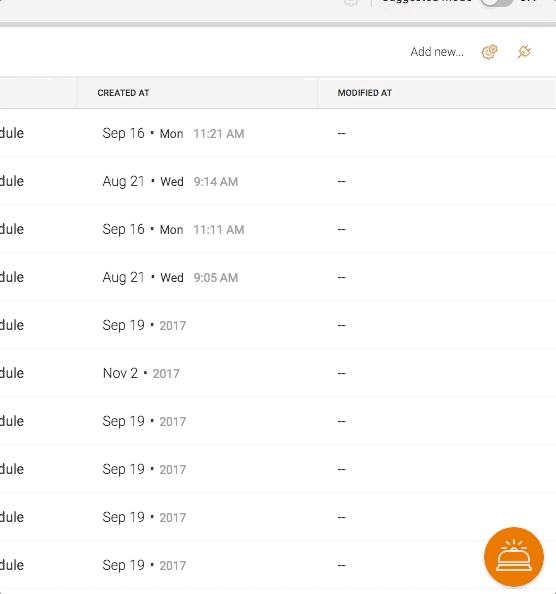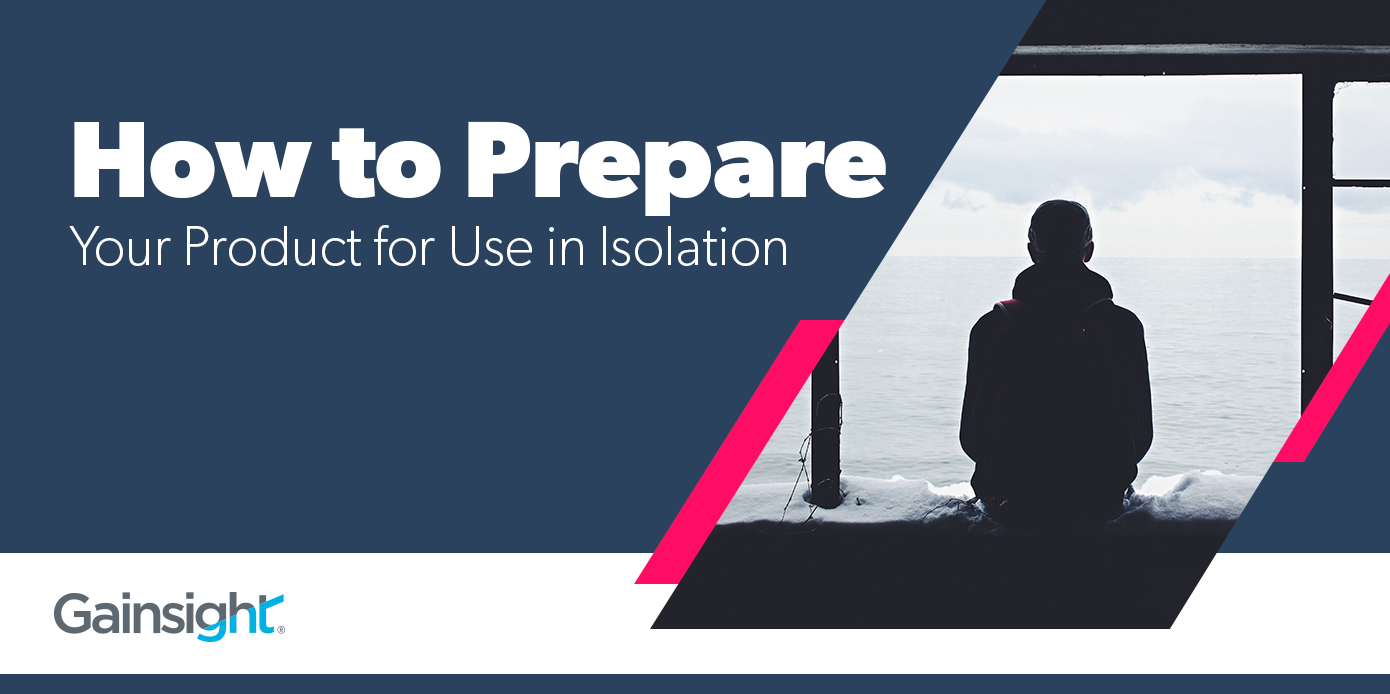In the SaaS industry, it’s always been our job to provide flexibility and accessibility through our products.
Remote work isn’t new. The products we create have fueled telecommuting ever since the inception of software-as-a-service. However, we’ve entered a time where work-from-home is more prevalent than ever and the global environment we work in is like nothing we’ve ever experienced.
Maybe you’ve noticed an influx of users with the shift to remote workforces. Or maybe you’re doing all you can to ensure your existing customers will continue to use your products. Whether you’re focusing on adoption or retention, your product needs to be able to provide value when your customer-facing teams cannot.
We can’t rely on our customer-facing teams to do the heavy lifting. Products need to step up and become more functional in an isolated environment if we want to succeed in the long-term.
Product experiences in an isolated environment
Let me begin by clarifying what I mean when I say that products should function in isolation. Here is a personal example. When my son was born one month ago, I went through all of the fun paperwork to get his birth certificate, social security number, insurance, etc.. To be honest, with all the craziness, I may not have entered all the information correctly. I didn’t have a coworker next to me to ask for their advice. I couldn’t walk down to People Success to get help in person. And it was tough coordinating a call with the vendor while taking care of our newborn and our rambunctious toddler home from school.
At my son’s next doctor’s appointment, low and behold, the insurance info was unavailable and I had to scramble. I did wonder though, what did I do wrong? Was it human or product error? Could my insurance product portal have been easier to use, especially when we’re so isolated?
In this new world, digital products are now the primary option for getting things done. It’s no surprise then, that since the outbreak of COVID, our customers have seen a 50% increase in Monthly Active Users.
Product management in an isolated environment
So what are the new considerations you have to make as a product manager?
Extreme Self Sufficiency: We need our products to enable people to do what they need with no help from their peers or internal champions. No “over-the-shoulder” guidance. No checking in with the local champion or administrator. Is your product easy enough to use upon first login?
Easy-to-use in an “at-home” context: People are at home right now with their kids, parents, and pets, managing multiple needs at every second. We don’t have time to call support and wait and our touchpoints with Customer Success need to be extremely efficient. This context raises the “self-sufficiency” bar higher. Does your product reduce the need for support and make customer success touchpoints more effective?
Making your product and users successful in the new normal
Test #1: How easy to use is your product without any guided help?
We’re all under a lot of pressure, especially our customer-facing teams. Whether they’re dealing with an onslaught of new customers or doing all they can to keep existing customers afloat, they’re incredibly busy.
Provide ample materials for users to access directly from your product. An in-app widget can be incredibly useful in this scenario. Gainsight PX provides a Knowledge Center Bot that we use in our own products. It gives users access to documentation and other helpful resources, as well as the opportunity to provide feedback, without them needing to leave the application.

Knowledge Center Bot in Gainsight PX
Your product needs to be able to carry the weight of onboarding and support. It’s not just smart for your product, but it’s the right thing to do for your teammates. Here are some resources to help you make your product more self-sufficient without sacrificing the human touch they need to succeed:
- 3 Tips for Onboarding New Users Quickly in a Crisis
- 3 Best Practices for Combining Human and In-App Communications
- How to Provide a High-Touch Product Experience While Social Distancing
Test #2: How quickly are users adopting new features without any guided help?
Onboarding is a critical part of the customer journey and the more a user can do without outside help, the better.
In-app engagements, communications that occur inside your product, are incredibly helpful when guiding a user through the onboarding process. We utilize guides and hotspots to lead users through workflows.
It’s also important that you measure the success of these workflows. Use product analytics to keep an eye on the path your users are taking as they travel through your product. Where are they dropping off? How are they getting from Feature A to Feature B? Are they missing out on a valuable, helpful feature?
Investing time into a product-led adoption strategy will not just help you in the current situation, but promote long-term growth.
Test #3: How are you meeting the needs of users holistically?
At this point in time, communication is everything. You can only get part of the picture from usage analytics—you need to be asking your customers for feedback in a strategic way. This way you can take their answers and sentiment and use it to quickly pivot on your roadmap planning.
Give users the chance to fill out a survey at key moments in their user journey. This can include after onboarding, upon completion of a new feature, or after resolving a support issue. Use all the different survey types out there to get richer, contextual feedback.
Most importantly, you need to close the loop. Don’t let them think that their feedback is falling into a black hole. Champion your product team within your product with in-app dialogs saying “we’ve improved this feature based on your feedback.”
Conclusion
In this new world, it’s no longer enough to make the product “usable.” The bar has been raised. In a way, this is a noble calling for product managers, to deliver solutions to people when they are most at need. For me, it was accessing health insurance. For others, it’s collaborating with colleagues, sharing files, ordering food, supporting their customers, or remaining close to friends and family. We need our digital products to serve us more than ever before.


